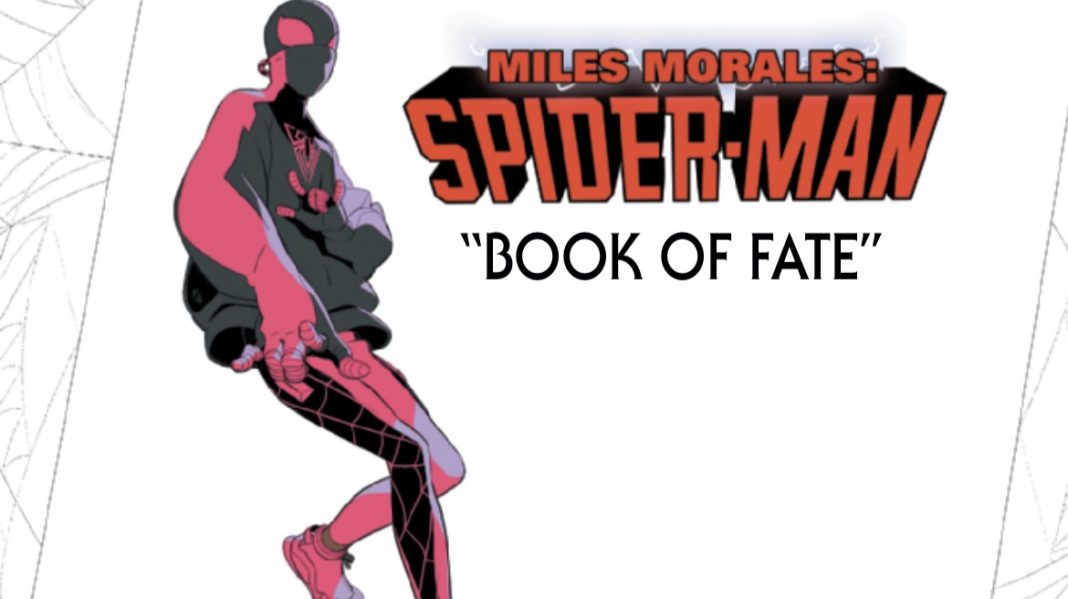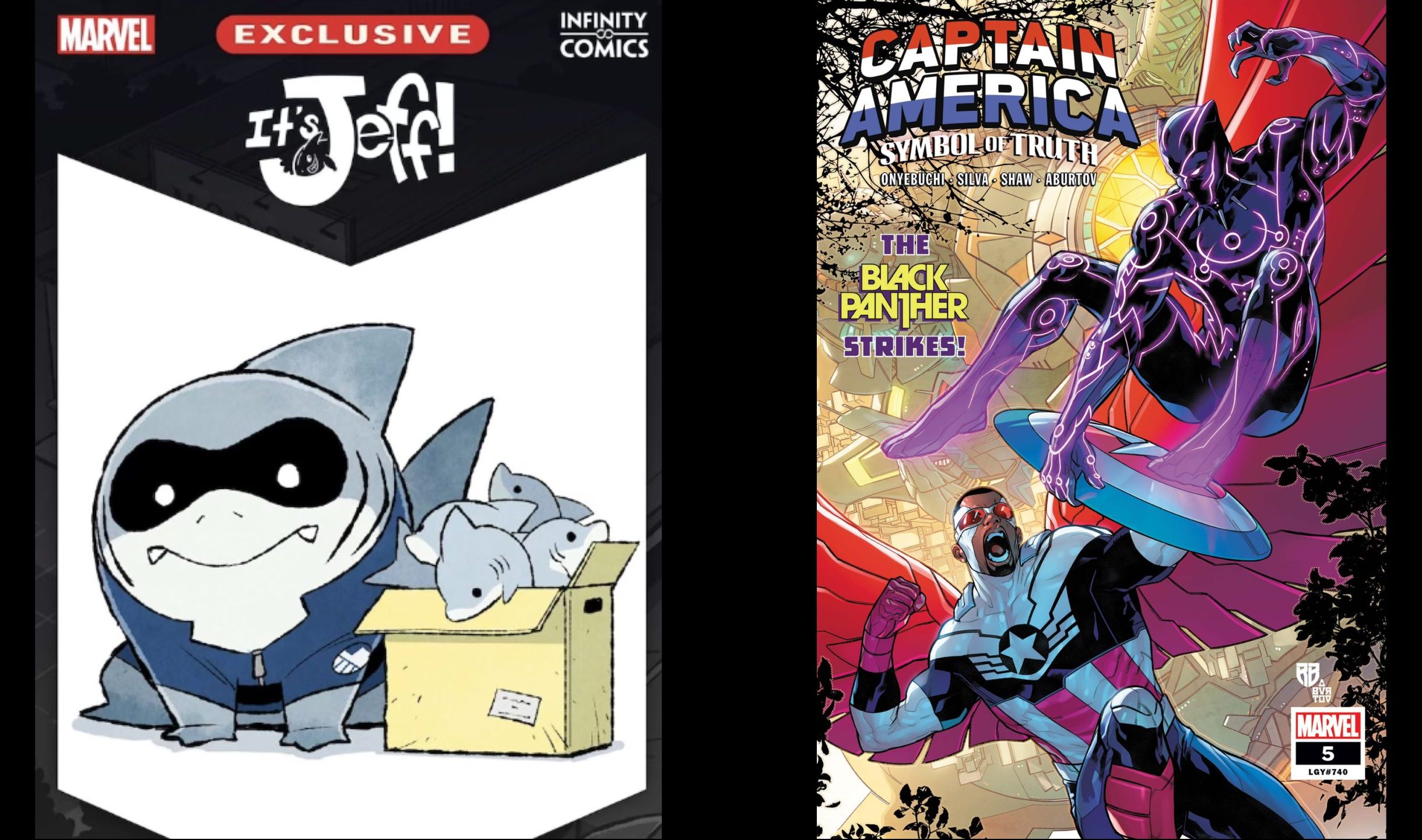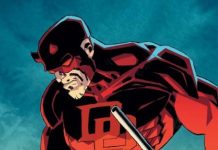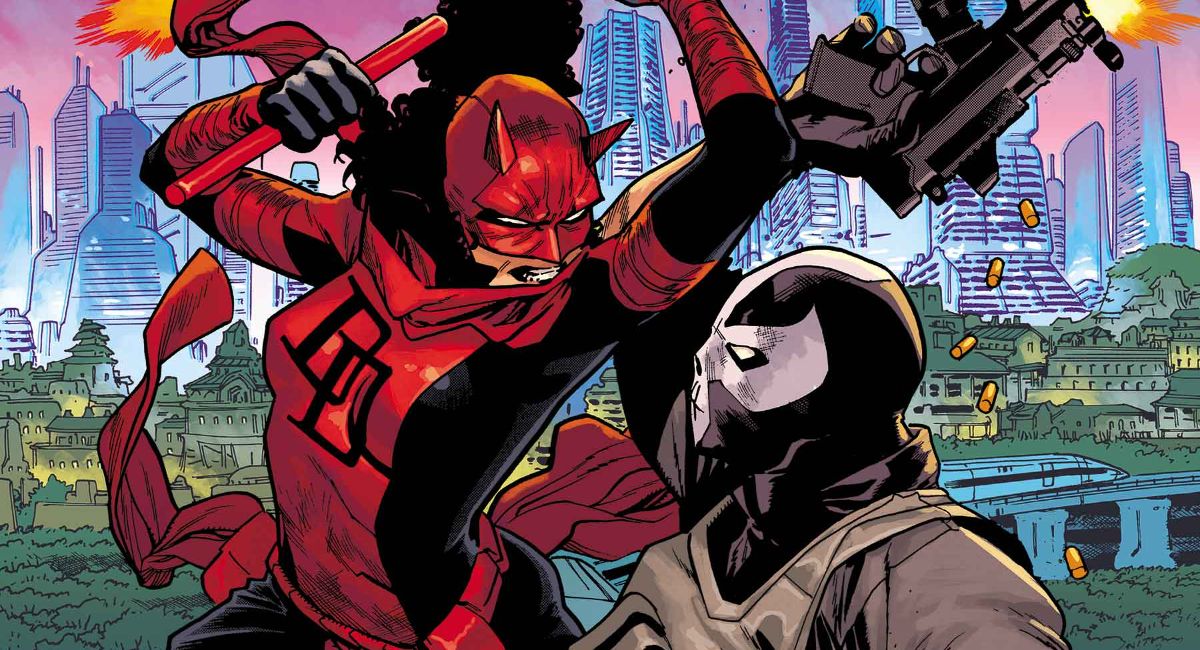Welcome back to the Marvel Rundown! This week, Stately Beat Manor dives into the final issue of Saladin Ahmed‘s critically acclaimed run, Miles Morales: Spider-Man. But where do Miles and his fans go from here? Find out in our SPOILER-LITE review!
Don’t wanna spoil the fun? Jump below the break for spoiler-free mini-reviews for Marvel Infinity Comics’ It’s Jeff! #16 and Captain America: Symbol of Truth #5!
As always, if you have any thoughts or questions, drop us a line in the comment section or stop by our socials @comicsbeat!
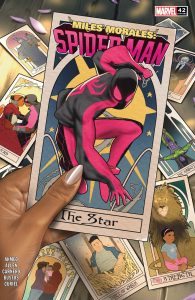
Miles Morales: Spider-Man #42
Writer: Saladin Ahmed
Artist: Carmen Carnero, Paris Alleyne, IG Guara, Paco Medina, Walden Wong, Alitha E. Martinez, Natacha Bustos, and Christopher Allen
Colorist: David Curiel
Letterer & Production: VC’s Cory Petit
42: the answer to the ultimate question of life, the universe, and everything… Well, at least for Miles Morales, 42 is more than a reference to Douglas Adams, it is his answer to the ultimate question of life, the universe, and everything: 42 is why he is the way he is. 42 gave him power. 42 gave him allies, but 42 also gave him that rogue’s gallery of Big Bads (including morally corrupted versions of himself) wanting to take him down. However, 42 (and the radioactive spider that bore the number 42 on his bum, an intentional reference to Jackie Robinson, but numbers can have more than one meaning) didn’t make Miles the man, aye, the superhero he is today. What Ahmed spent 42 issues—#42 was the writer’s long-planned exit on the series—exploring is what makes a young man a hero, about coming back from trauma (and how that makes a young man a hero), and how to use that trauma to help others rather than hurt them.
First, let’s get my small gripe out of the way; I say “small,” not because the gripe is small but because I find the problem intrinsic to many superhero stories, especially Spider-Hero stories: it’s time for comics to think of new ways of showing their heroes coping with trauma than punching things (when violence, even non-lethal violence, is a go-to method of working through the emotional turmoil that’s proof positive that you haven’t worked through the trauma). Now, I know good action is important to any comic, and I enjoyed the exploration of Miles’ trauma in this run. Still, it did not do enough to explain the healthy coping mechanisms Miles employed throughout the run—and there were many.
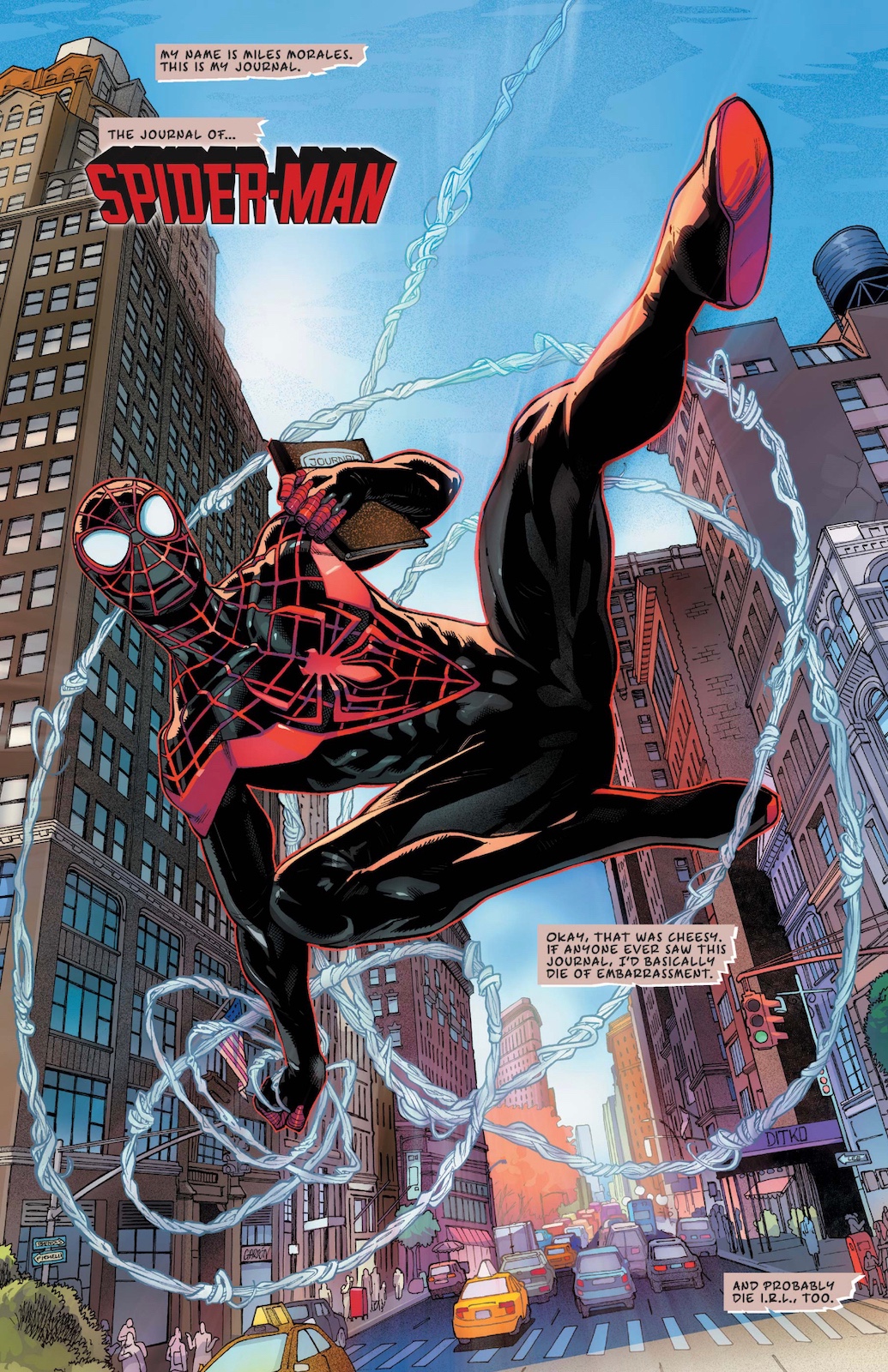
Considering the popularity of Marvel films and TV shows, I like to think of any comic as a fresh slate for new eyes. This is especially true regarding Miles, who many young fans were introduced to—and fell in love with—in Miles Morales: Into the Spider-Verse, giving a series sporting the hero’s name a unique opportunity to do more than just bring new fans to Marvel Comics (which the run successfully did), it can also teach young readers about resilience and HOW to develop resilience. While Ahmed’s Miles Morales run focused heavily on overcoming trauma (a plus), with 42 issues, I wanted to see more of the focus centered on effective and healthy ways of coping with his trauma. However, I really did enjoy the use of Miles’ journal, both as a narrative device and as a tool for overcoming his trauma.
Now, to the positive.

In regards to structure, it was next level. If you haven’t checked out this comic book run, consider buying the first two issues and issue #42. The parallel structure has been used to show Miles’s growth since Miles Morales: Spider-Man began back in 2018, as well as the character’s growth into the future. It was a joy to st Tiana Toomes, a.k.a. Starling, and to see them team up with Rhino to save a group of mind-controlled super-powered children from The Snatcher, highlighting the development of Rhino from supervillain to superhero and the medium’s changing views on who America’s true villains are: rather than the Russian mobsters of the past, in this case, it’s a man with Nazi-inspired tattoos who kidnaps “undesirable” children and turns them into weapons.
Unlike the first time, we saw Miles and Rhino team up alongside Captain America, who had to encourage the young hero to have confidence in his own decision. This time, fans see a stronger Miles with the fortitude to make his own choices. I guess he really did learn something fighting with and against himself for the last four years.
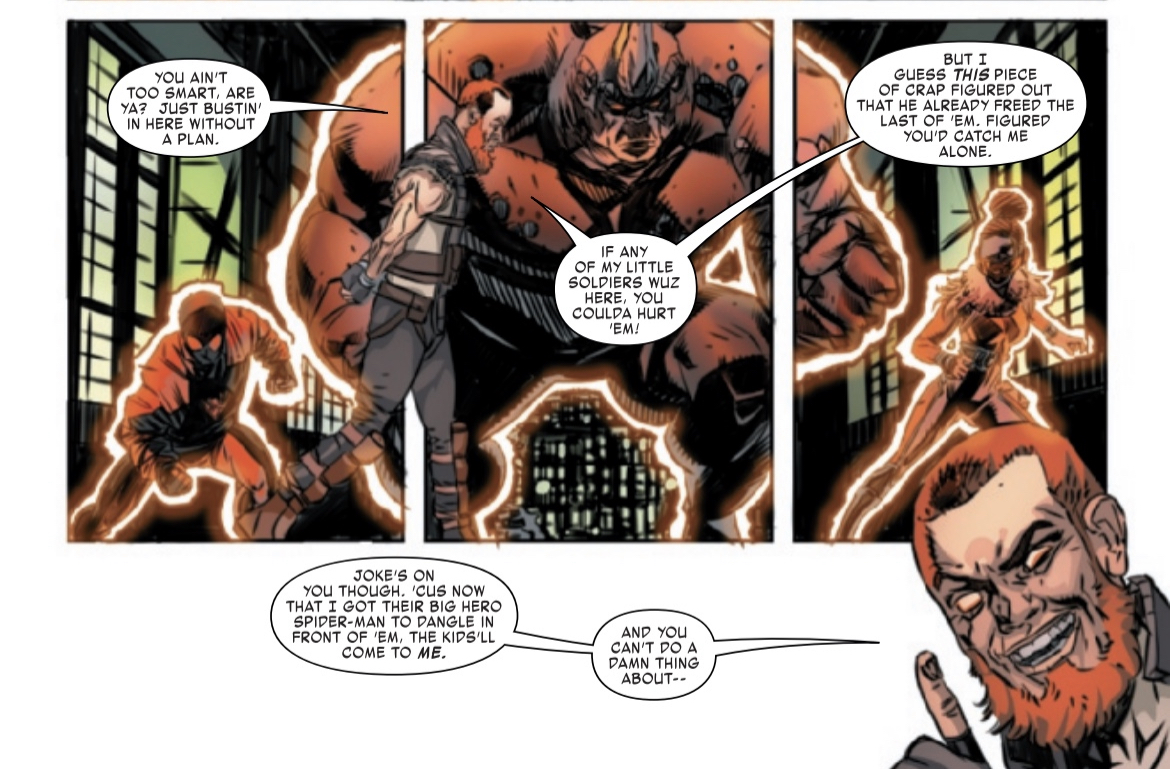
VERDICT: BUY (but you need to read some back issues if you haven’t checked out this series yet)
Rapid Rundown!
- It’s Jeff Infinity Comic #16
- It’s Jeff, the comic about Gwenpool’s pet landshark by Kelly Thompson and Gurihiru, continues to delight. Entry sixteen sees our eponymous protagonist returning to the Jeff-themed store introduced in #15 and discovering that an old antagonist is behind the shop… but instead of the Black Widow-style walloping Jeff imagines, the conflict is resolved in a much more adorable manner. Nobody brings a character to life like Gurihiru, and it’s exciting to get to see them get a chance to depict a returning villain from The Unbelievable Gwenpool again. Meanwhile, Thompson has a knack for weaving in the corners of the Marvel universe you most want to see Jeff scurry his way into. Together, they consistently deliver a comic that’s equal parts chuckles and cuteness. And all this without dialogue! We all deserve more Jeff. —AJK
- Captain America: Symbol of Truth #5
- To complete his world tour of the Marvel Universe, uncover a vibranium smuggling ring, and stop a terrorist, Sam Wilson infiltrates Wakanda, the homeland of the Black Panther. For the past 5 issues, writer Tochi Onyebuchi and artists R. B. Silva & Julian Shaw have been giving us an action-packed adventure as Cap looks to uncover the threat that is the mysterious, White Wolf. But what really elevates this book is the mix of social commentary as a subplot of disenfranchised Black Americans emigrating to Wakanda for a better life. Why this has never been a plot point in the Marvel Universe I don’t know, it’s something on my wish list of nerdy things to want, even with the valid points that Sam makes about their isolationist history. Onyebuchi has crafted a world away from that other shield slinger that is just as important to the American way, and the beautifully dynamic artwork turned in by Silva and Shaw just turns it up a level. —GC3
Also out this week: Marvel Voices: Comunidades!


